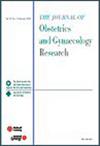Endometriosis-related infertility focusing on mitochondrial DNA damage and its repair mechanism: Considering treatment strategies
Abstract
Aim
Endometriosis is a chronic gynecological condition characterized by persistent inflammation and frequently associated with dysmenorrhea and infertility. The success rate of assisted reproductive technology (ART) in individuals with endometriosis is often reported to be suboptimal. This review consolidates recent insights into mitochondrial DNA (mtDNA) damage and repair mechanisms in endometriosis patients and examines prospective therapeutic strategies.
Methods
For this narrative review, an extensive search of electronic databases was undertaken to identify relevant studies published up to August 31, 2024.
Results
In oocytes and granulosa cells from endometriosis patients, elevated levels of reactive oxygen species (ROS), driven by hypoxia and oxidative stress, contribute to the accumulation of mtDNA mutations. mtDNA repair is primarily dependent on the base excision repair (BER) pathway, mediated by poly(ADP-ribose) polymerase (PARP-1), due to a deficiency in double-strand break repair mechanisms. Upon mtDNA damage, PARP-1 activates single-strand break repair, utilizing nicotinamide adenine dinucleotide (NAD+) as a substrate. This process depletes ATP and leads to mitochondrial dysfunction in oocytes and granulosa cells. Such mitochondrial impairment may underlie the reduced efficacy of ART in endometriosis patients. Therapeutic interventions aimed at enhancing mitochondrial function, particularly by increasing mitochondrial NAD+ levels, represent a promising approach to addressing endometriosis-associated infertility.
Conclusions
mtDNA mutations and defective repair pathways in endometriosis are key contributors to mitochondrial dysfunction, which compromises ART success. This review highlights the potential of mitochondrial function-enhancing therapies as innovative strategies for improving reproductive outcomes in patients with endometriosis.

 求助内容:
求助内容: 应助结果提醒方式:
应助结果提醒方式:


